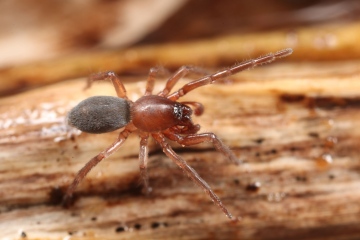Summary for Haplodrassus minor (Araneae)
previous species | next species
National Distribution
Terms of Use. Double-click on map to go to region

Explore Regional Distribution
Please log on and add a note on this species
About this species
Recorded altitude range0m to 5m
Species text
DistributionThe species has been recorded from coastal locations between Suffolk and Dorset, and from Pembrokeshire, Caernarvonshire and Cardiganshire. The European distribution includes Norway, Germany, Switzerland, Austria, the Czech Republic, Hungary, Romania, Poland, the Balkans and Russia
Habitat and ecology
H. minor occurs among tide litter and sparse vegetation and shingle on the seashore. Both sexes have been recorded between April and June, with a peak in June.
Status
The spider may be fairly numerous, but most populations are very localised and the habitat is vulnerable to disturbance.
Threats
Public pressure can disturb the habitat by trampling. In some areas, holiday development and gravel extraction are also threats. On some beaches used for recreation the strandline is regularly removed by machine as it is considered unsightly and a source of pests. This is not known to take place on any beaches supporting this spider, but it could pose a threat to this and other strandline-dwelling invertebrates. Most populations are on the east coast, where sea level rise may threaten its habitat.
Management and conservation
Accumulations of tide-line litter are likely to be of value to this spider and should be left undisturbed.
Text based on Dawson, I.K., Harvey, P.R., Merrett, P. & Russell-Smith, A.R. (in prep.). References
Adult Season
Habitats
background methodology
Recorded management for locations with Haplodrassus minor
Recorded substrate and hydrology for locations with Haplodrassus minor
Images
please log on and upload a new image for this speciesSee also A-Z Species Index - A-Z Picture Index - previous species | next species
